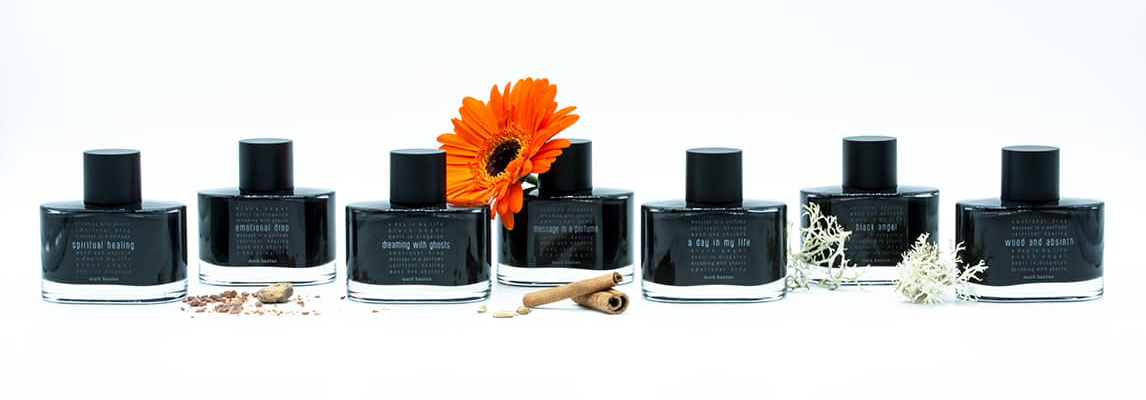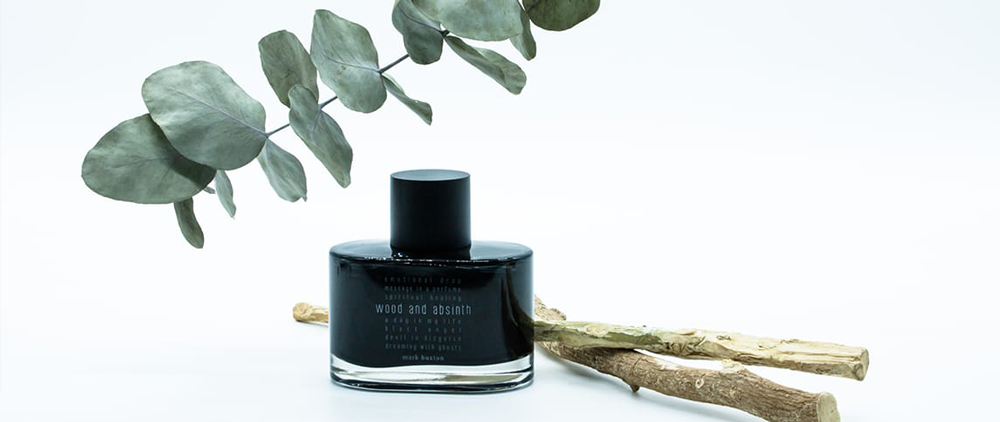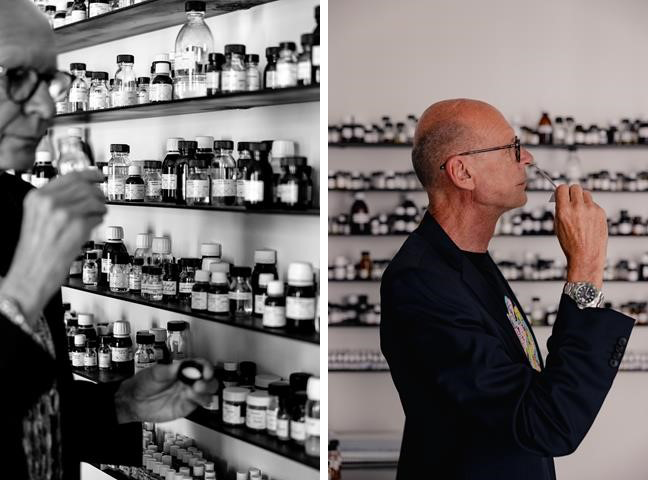WRITTEN BY ELIZABETH CLARKE,
INDEPENDENT JOURNALIST
Although its scent may linger gracefully, an exquisite perfume can make a long-lasting impression; its notes, qualities, and characteristics harmonise and become whole, like music. If a scent's ingredients are like musical notes, a perfumer is the conductor and Paris-based scent connoisseur, Mark Buxton is at the very forefront of the fast-paced international fragrance industry. The nose behind the Comme des Garçons scent DNA and other iconoclastic fragrances for luxury brands, including Yves Saint Laurent, Cartier, and Burberry, has a passion for niche scents and the highest-quality ingredients, such as Indian sandalwood. We spoke to the renowned perfumer at his home in Paris about his prolific career in the notoriously competitive fragrance industry and the beauty of niche perfumes.
Quintis (Q): Mark, how did you discover the world of perfume?
Mark Buxton(M): I was born in England but grew up in Weeze, a small village in Germany. I slid into the perfume industry absolutely by coincidence when, at 21, I went on a German game show with a friend and had to identify 600 perfumes in a blind test. It led to representatives from Haarmann & Reimer (now Symrise) offering me a place in their training program. I had absolutely no idea what a perfumer was - I didn't even know it existed - but I thought I’d give it a shot.
Then, just before I became a junior, they sent me to Paris for three months. That was 33 years ago, and I am still here and my career has been entirely in Paris.
My big break came when I created the first Comme des Garçons Fragrance, and since then, I have created fragrances with many brands, including Givenchy, Versace, Van Cleef & Arpels, Paco Rabanne, Lagerfeld, Burberry, Cartier, Chopard. I was like the English underground perfumer! Then I went off and did my own thing. The prestige perfume market lacks creativity. my passion lies in niche fragrances; I created my own company, Mark Buxton Perfumes, with two lines, Black and Blue (which is also called the Freedom line) and candles. I work closely with David Chieze and Geraldine Ignesta, who are also perfumers, and we create for brands worldwide.

Tell us about your niche perfumery, Nose Paris.
M: We started Nose Paris in 2012 in the heart of the Montorgueuil neighbourhood in Paris, dedicating it to niche perfumery and beauty. We carry over 500 fragrances and 50 niche perfume brands, including our own lines as well as Frédéric Malle, Juliette has a Gun, Maison Francis Kurkdjian, L’Artisan Parfumeur, Acqua Di Parma, Penhaligon’s, and Miller Harris. We also have an online store for customers abroad.

Is it possible to purchase perfume online when you can’t smell it first?
M: Yeah, it can be a bit tricky! We get lots of requests, such as "I love the description of your Black Angel, but I wouldn't mind smelling it before buying it," which I understand. You can read and imagine a fragrance description, but it may not smell like that when you receive it. So, we developed a search engine, Find Your Fragrance. It’s an olfactory diagnosis that asks seven questions and gives you five recommendations based on your responses. So, once you find your fragrance, it's easy to buy it online.
How do you approach creating a scent?
M: Luxury brand briefs are very typical – they might ask you to imagine what a successful young woman with a great job and a BMW Cavalier would want to wear - all the clichés! They often give the brief to several perfumers who interpret it differently. When it comes to niche perfumery, however, the brief allows more space for creativity, it might be a colour or a piece of music or imagery - you create with less information, allowing total freedom and more creativity. It means we can add real rose, sandalwood or even expensive chemicals. We can use whatever we feel is right, which is powerful. Everything starts from a white sheet of paper, we don’t have a perfume library, and we tailor made for every client.
What are some of your favourite ingredients?
M: I am drawn to scents such as incense, Vetiver from Haiti, and rose oil. I love working with Indian sandalwood, and Quintis produces an extremely good quality. Sandalwood is like a cover that wraps itself around a fragrance and makes you feel warm. It's centralising with a natural sensuality, which is one of its main beauties. It provides depth and creaminess to a perfume. I love its slightly peanut scent and combining it with vetiver or patchouli.

Do we need a signature scent?
M: Years ago, people used to have a signature scent, like my mother. My father used to buy her Chanel No. 5 every Christmas. He still does the same today—I don’t think he’s changed his present in fifty years! Nowadays, perfume is like fashion. It moves so fast, and so does the industry.
Scent has become an accessory, especially for young people and boys, who look for a perfume to wear to a party and then a different one for dinner. They change their fashion and perfume like their underwear!
